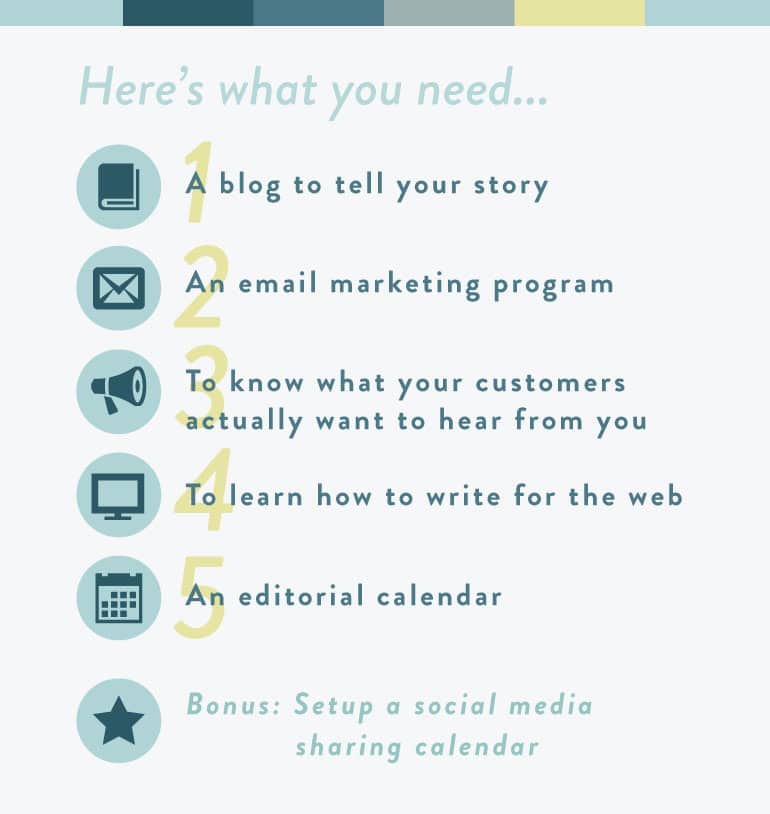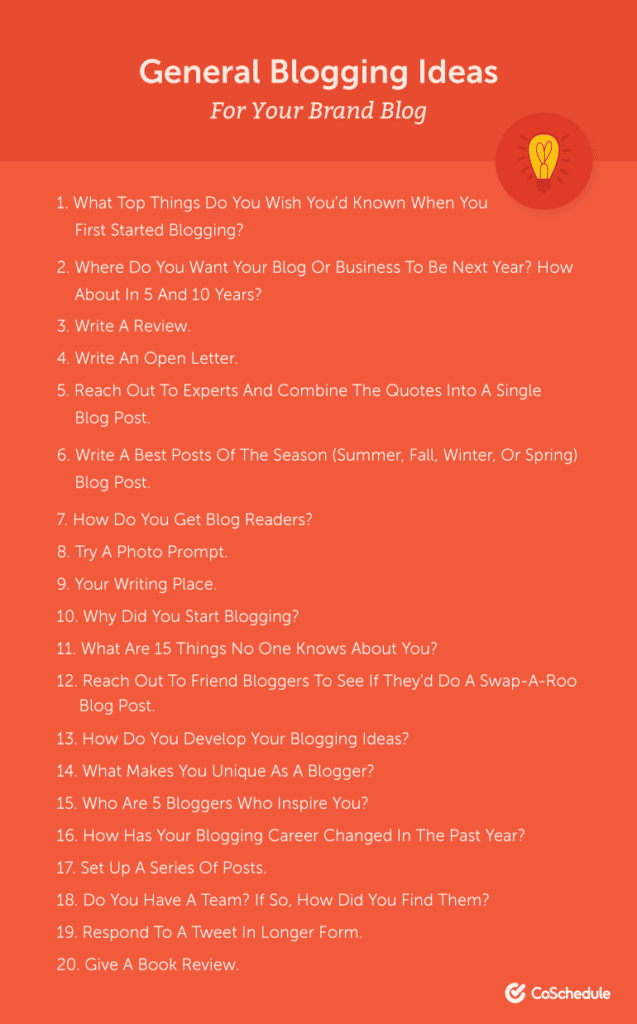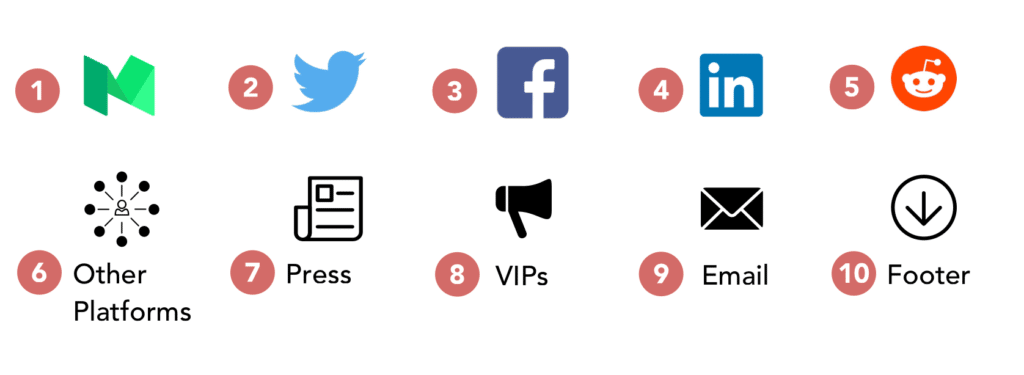Maybe you’ve finally decided to pull the trigger and start your blog. Or maybe you have a blog that’s been wasting digital real estate and is in need of major facelift. Wherever you are in your blogging journey, the one thing you need most is to get your blog’s heart beating.
Though you can technically start a business blog in under five minutes, breathing life into a sustainable blogging business takes more than getting a domain and going live with a website.
Blogging is big business, with more than 512 million live blogs on the internet (compared to just 23 blogs in 1999) and 28 million bloggers. There’s plenty of competition, but there’s also plenty of room for new blogs to thrive — especially if you have something unique to offer your readers!
Jump start your blog in five straightforward steps and enjoy newfound success:
1. Go Live as Soon as Possible
Coming up with a unique name for your blog can be one of your toughest challenges, and because it happens early in the process, it can slow down your blogging dreams. But once you do finally settle on a name, you are then one step closer to launching.
Use your name to set up a domain and web hosting, then use a quick site builder like Squarespace or WordPress to go live as soon as possible — even if you don’t have content!
Procrastination can kill your momentum, so why delay your blog any longer than you really have to? Instead, you should have a sense of urgency when building your blog that makes you feel like you have to get it done or else you’ll never be the pro blogger you aspire to be.
And if you need a push in the right direction, my recent post, How to Apply the ‘Get Shit Done’ Approach to Your Every Day Life was written for you.

2. Build an Idea Repository
The key to being consistent is to reduce the amount of energy it takes to begin a particular task. Tasks that take too long to get started often end up incomplete. It takes too much energy to engage, so you opt to not engage at all.
This is highly relevant to blogging. It takes an average of 3.5 hours to write a blog post, and that doesn’t include all the prep work like topic ideation and keyword research.
One way to avoid blogging burnout is to keep a running list of ideas and keywords that will make it easier to start writing. You don’t have to spend precious time on coming up with talking points and can put more energy in creating awesome content.
Here’s a template worth checking out for blogging ideas:

3. Connect with Other Bloggers
Bloggers make the mistake of viewing other bloggers as competition, but there’s much to be said about collaboration.
Make it a point to connect with bloggers online and in your area, especially if you share similar audiences. You can combine your resources (and blogs) to promote each other, create higher value content, and form strategic partnerships that can prove beneficial to both of you.
These partnerships are the very foundation of guest blog posting. Bloggers who want to promote their skills and content on other websites or blogs have a better chance of securing authorship when they have an in. Take time to build your professional network, nurture your relationships, then leverage those connections to help you expand your reach ― all without having to pay for ads.
4. Get Help Where You Need It
You don’t have to be an expert writer to have an expertly written blog. You do, however, need to make sure that you are knowledgeable about the topics you want to publish content around. If you’ve identified a profitable niche and develop a good strategy, consider outsourcing in the areas that you may not be the strongest in.
For instance, let’s say you love writing but you may not be the best at editing. That’s a great place for you to hire out for help. It’s about identifying your strengths and weaknesses and knowing where you need the most help. You don’t need to be an expert at everything in order to start your blog and make it profitable.
A great exercise to consider is:
- Lay out the topics you want to write about.
- Decide which ones you want to write and that you could consider outsourcing so you can amplify the output without losing the authenticity of ‘who’ you are and ‘who’ you’re writing for.
- Lay out a game plan for how you may want to monetize your blog. Understand which implementations you’re good at and where you may want more help so that you can also free up your own time to tackling the initiatives you excel at.
- Execute. Action takes precedence over anything else. This is the only way you’ll be able to truly understand what works and what doesn’t.
5. Share Your Blog Content
Social media is a primary vehicle for content marketing. Many users use social channels like Facebook, Twitter, and LinkedIn to build an audience and form strategic partnerships with other bloggers to grow their following. Users can click on your posts to go to your website to learn more about you.

Some of the avenues I venture down to share my blog content are the following:
- LinkedIn Pulse. I will repurpose content directly onto my LinkedIn profile, adding in tags and a link that goes back to where the original post is hosted.
- Medium. I do the same here as I do for LinkedIn Pulse.
- Subreddits. I’ve mentioned this before in a previous blog post, but subreddits are a great way to also amplify and distribute your content.
- LinkedIn Groups. The same approach I take with subreddits, I will do here as well.
- Pinterest. Create visuals highlighting your blog content and share them here.
- Instagram. Use Insta Stories as a way to get traffic to move over to your site and even use status updates as a microblogging opportunity where you feature a small snippet of your blog content.
For more, check out these two blog posts:
Final Thoughts
Remember, blogging is largely a numbers game. The more content you create and the more people who see it, the better your blog will fare. But blogging is also a quality game. You can’t post lackluster content and expect your readers to drool over it. Commit to the right balance of consistent, quality content that’s targeted to the right people — it will be hard not to succeed.
Lastly, get into the habit of planning out your blogging efforts every month and then gradually grow that to an entire 90 days. Doing so will help you see what you need to work on and paint a good roadmap for growing your blog.






2 Responses